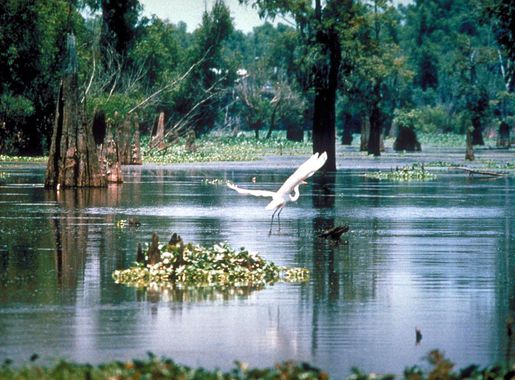
Atchafalaya National Heritage Area: A Natural Wonder in Louisiana
Discover the Atchafalaya National Heritage Area: A blend of natural beauty, wildlife, and rich cultural heritage in Louisiana's largest river swamp.
Atchafalaya National Heritage Area is a vast and unique landscape located in Louisiana. It is known for its rich cultural history and diverse ecosystem. The area covers over 1.4 million acres and includes the largest river swamp in the United States. Visitors can explore the bayous, swamps, and forests that make this region so special. The heritage area is a haven for wildlife enthusiasts. It is home to a wide variety of species, including alligators, birds, and fish. Birdwatchers will be delighted by the chance to see rare and migratory birds. The Atchafalaya Basin is also a great spot for fishing, offering abundant opportunities to catch bass, catfish, and crappie. Cultural heritage is a big part of the Atchafalaya experience. The area is steeped in the traditions of the Cajun and Creole people. Visitors can enjoy local music, food, and festivals that celebrate this rich heritage. Don't miss the chance to try authentic Cajun cuisine like gumbo, jambalaya, and crawfish. Outdoor activities are plentiful in the Atchafalaya National Heritage Area. You can go boating, kayaking, or take a swamp tour to get up close with nature. There are also many trails for hiking and biking. Whether you are looking for adventure or relaxation, the Atchafalaya offers something for everyone.
Local tips in Atchafalaya National Heritage Area
- Bring insect repellent, especially during the warmer months, as mosquitoes can be prevalent.
- Wear comfortable and waterproof footwear if you plan to hike or explore the swamps.
- Visit during the spring or fall for the best weather and wildlife sightings.
- Check local festival schedules to experience authentic Cajun and Creole culture.
- Hire a local guide for swamp tours to get the most informative and safe experience.
Atchafalaya National Heritage Area: A Natural Wonder in Louisiana
Atchafalaya National Heritage Area is a vast and unique landscape located in Louisiana. It is known for its rich cultural history and diverse ecosystem. The area covers over 1.4 million acres and includes the largest river swamp in the United States. Visitors can explore the bayous, swamps, and forests that make this region so special. The heritage area is a haven for wildlife enthusiasts. It is home to a wide variety of species, including alligators, birds, and fish. Birdwatchers will be delighted by the chance to see rare and migratory birds. The Atchafalaya Basin is also a great spot for fishing, offering abundant opportunities to catch bass, catfish, and crappie. Cultural heritage is a big part of the Atchafalaya experience. The area is steeped in the traditions of the Cajun and Creole people. Visitors can enjoy local music, food, and festivals that celebrate this rich heritage. Don't miss the chance to try authentic Cajun cuisine like gumbo, jambalaya, and crawfish. Outdoor activities are plentiful in the Atchafalaya National Heritage Area. You can go boating, kayaking, or take a swamp tour to get up close with nature. There are also many trails for hiking and biking. Whether you are looking for adventure or relaxation, the Atchafalaya offers something for everyone.
When is the best time to go to Atchafalaya National Heritage Area?
Iconic landmarks you can’t miss
Atchafalaya Basin Landing Airboat Swamp Tours
Discover the breathtaking beauty and wildlife of Louisiana's Atchafalaya Basin with exhilarating airboat tours and knowledgeable local guides.

Atchafalaya National Wildlife Refuge
Discover the breathtaking beauty and diverse wildlife of Atchafalaya National Wildlife Refuge in Louisiana, a must-visit destination for nature lovers.
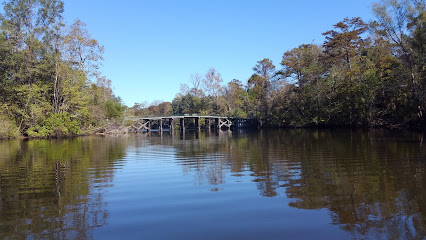
Plaquemine Lock State Historic Site
Discover the history and beauty of Plaquemine Lock State Historic Site, a testament to Louisiana's rich cultural heritage and engineering marvels.
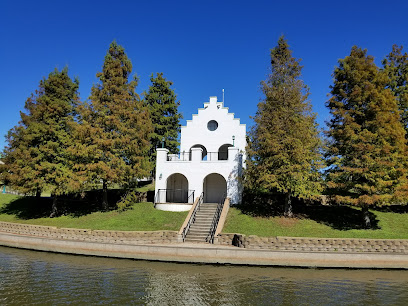
Bayou Teche National Wildlife Refuge - Garden City Unit
Experience the natural beauty and tranquility of Bayou Teche National Wildlife Refuge, a haven for wildlife enthusiasts and outdoor adventurers in Louisiana.

Atchafalaya Basin
Experience the breathtaking beauty and biodiversity of the Atchafalaya Basin, Louisiana's largest wetland and a haven for nature lovers and adventure seekers.
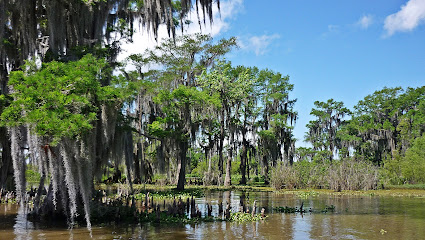
Atchafalaya Delta Wildlife Management Area and Game Preserve
Explore the Atchafalaya Delta Wildlife Management Area, a breathtaking nature preserve home to diverse wildlife and stunning natural landscapes in Louisiana.
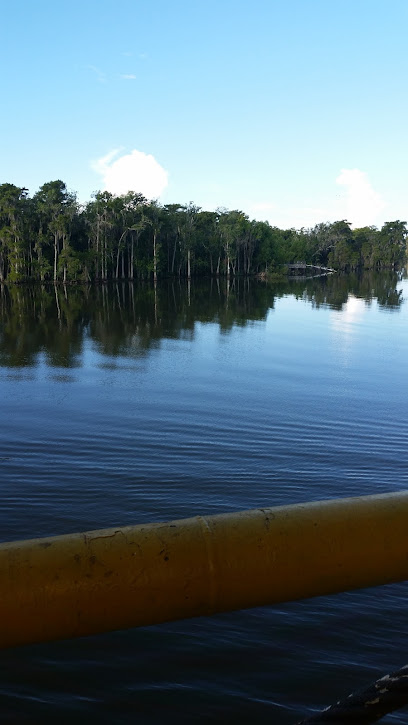
The Atchafalaya Experience
Explore the stunning wetlands and rich culture of Louisiana at The Atchafalaya Experience, your gateway to unforgettable adventures.
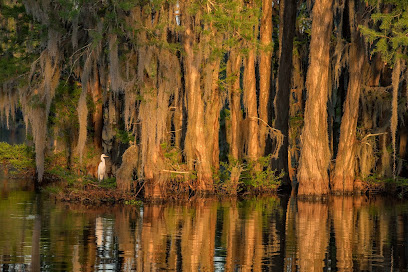
Atchafalaya Welcome Center
Explore Louisiana's natural beauty at the Atchafalaya Welcome Center, your gateway to the enchanting Atchafalaya Basin.
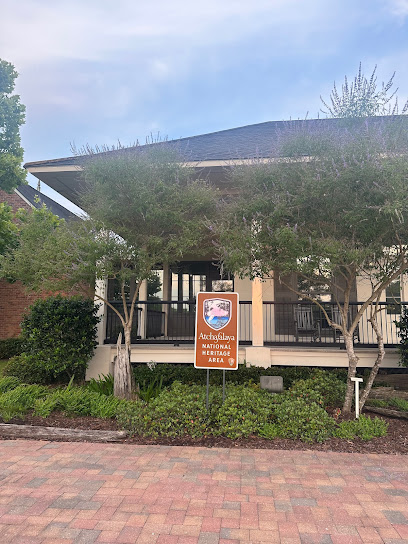
Atchafalaya National Heritage Area - Bayou Teche
Explore the Atchafalaya National Heritage Area - Bayou Teche, a serene wildlife refuge in Louisiana boasting diverse ecosystems and rich cultural heritage.

Atchafalaya National Heritage
Explore the Atchafalaya National Heritage: Louisiana's cultural gem blending rich history, vibrant traditions, and stunning natural landscapes.

Unmissable attractions to see
Southwest Reef Lighthouse
Discover the charm of Southwest Reef Lighthouse in Berwick, Louisiana, where maritime history meets stunning coastal views.
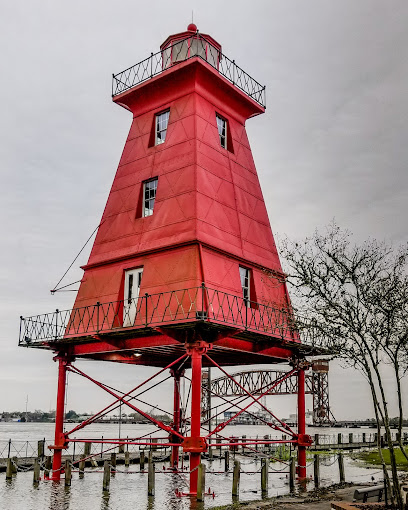
Afton Villa Gardens
Discover the enchanting Afton Villa Gardens in St. Francisville, Louisiana, where vibrant blooms and rich history intertwine in a serene botanical retreat.
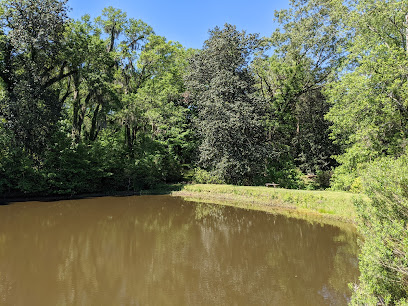
Essential places to dine
Atchafalaya Welcome Center
Explore Louisiana's stunning landscapes at the Atchafalaya Welcome Center—your gateway to adventure in America's largest river swamp.
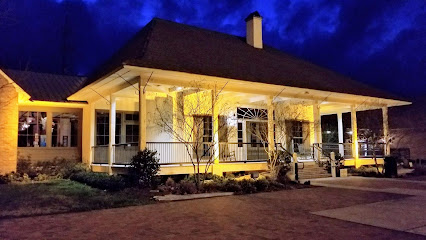
Atchafalaya
Savor Southern flavors at Atchafalaya, where Creole cuisine meets live music in the heart of New Orleans.

Chicken On The Bayou & Boudin Shop
Discover authentic Cajun cuisine at Chicken On The Bayou & Boudin Shop in Breaux Bridge—home of delicious boudin and fried chicken!
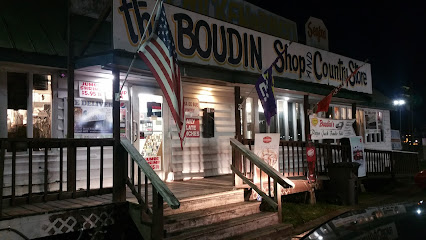
Pat's Fisherman's Wharf Restaurant
Experience authentic Cajun seafood at Pat's Fisherman's Wharf while enjoying stunning views of the Atchafalaya Basin in Henderson, Louisiana.
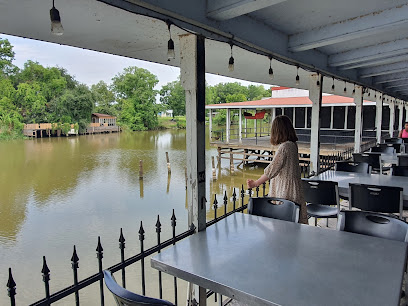
Buck & Johnny's: Eclectic Italian with a Cajun Flair
Experience the perfect blend of Italian and Cajun flavors at Buck & Johnny's in Breaux Bridge - A must-visit culinary destination.
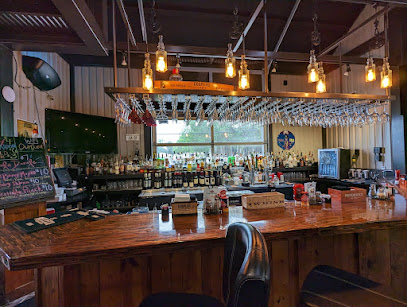
Atchafalaya National Wildlife Refuge
Explore Atchafalaya National Wildlife Refuge: A serene sanctuary showcasing Louisiana's diverse ecosystems and rich wildlife.

Atchafalaya Cafe
Discover authentic Cajun flavors at Atchafalaya Cafe in Morgan City – a seafood lover's paradise with rich culinary heritage.
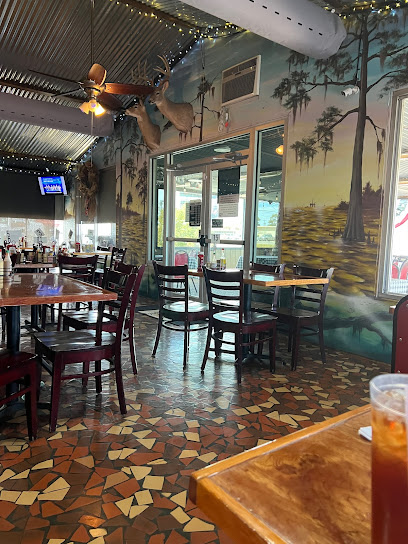
Popeyes Louisiana Kitchen
Discover authentic Cajun flavors at Popeyes Louisiana Kitchen in Henderson - home to spicy fried chicken and delectable seafood dishes.
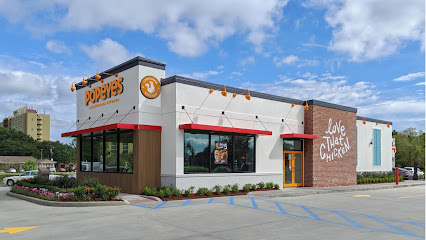
Hebert's Boudin and Cracklins
Discover the heart of Cajun cuisine at Hebert's Boudin and Cracklins in Breaux Bridge – home to delicious boudin and mouthwatering cracklins.
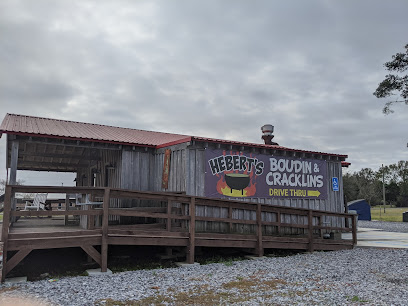
Soileau's Dinner Club
Savor authentic Cajun cuisine at Soileau's Dinner Club in Opelousas—where every dish tells a story!
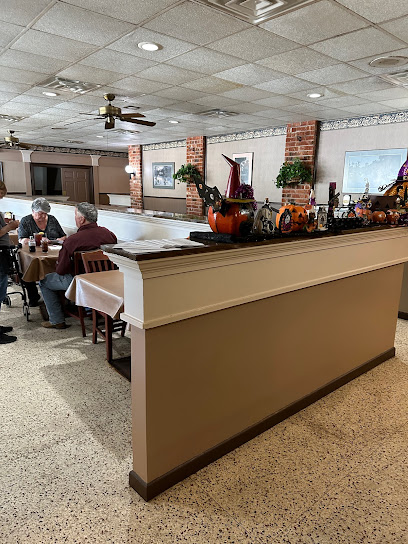
The Atchafalaya Restaurant | Idlewild Golf Course
Discover authentic American cuisine with a Cajun twist at The Atchafalaya Restaurant nestled in Idlewild Golf Course.
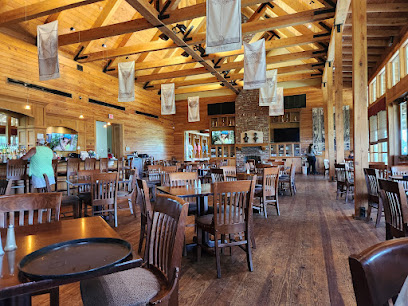
Atchafalaya Seafood Co.
Experience the essence of Louisiana seafood at Atchafalaya Seafood Co., where fresh flavors meet Southern hospitality.

Latil's Landing Restaurant at Houmas House Plantation and Gardens
Experience exquisite French cuisine amidst the enchanting beauty of Houmas House Plantation and Gardens.
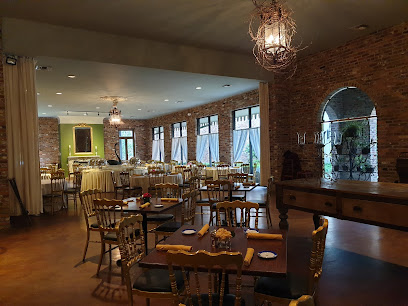
Atchafalaya Delta Wildlife Management Area and Game Preserve
Discover the breathtaking beauty of Atchafalaya Delta Wildlife Management Area—an ecological gem in Louisiana's wilderness perfect for adventure seekers.
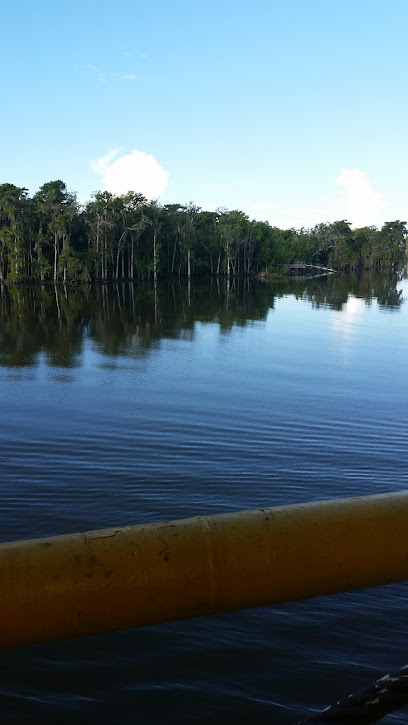
Atchafalaya National Heritage Area - Bayou Teche
Explore Atchafalaya National Heritage Area - Bayou Teche: A Wildlife Refuge Rich in Biodiversity and Natural Beauty.

Markets, malls and hidden boutiques
Atchafalaya Welcome Center
Discover the Atchafalaya Welcome Center, your gateway to Louisiana's natural beauty and vibrant culture, where adventure meets tranquility.
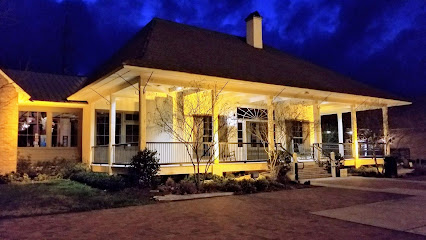
Atchafalaya National Wildlife Refuge
Discover the breathtaking beauty and diverse wildlife at Atchafalaya National Wildlife Refuge, a serene escape in the heart of Louisiana.
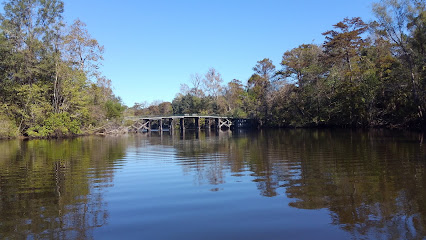
The Atchafalaya Experience
Discover the enchanting beauty of the Atchafalaya Basin with immersive boat tours and comfortable group accommodations in Louisiana.
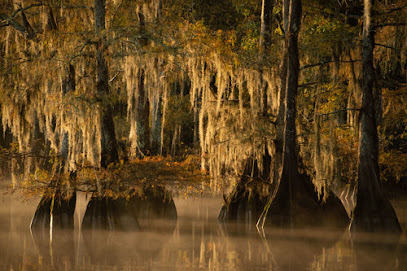
Atchafalaya National Heritage Area - Bayou Teche
Discover the breathtaking Atchafalaya National Heritage Area - Bayou Teche, a wildlife refuge showcasing Louisiana's unique ecosystems and outdoor adventures.
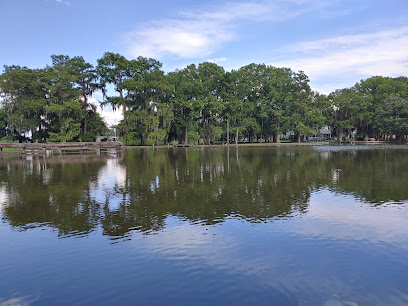
Atchafalaya National Heritage
Experience the enchanting landscapes and rich cultural heritage of Atchafalaya National Heritage, a true gem in Louisiana's vibrant ecosystem.
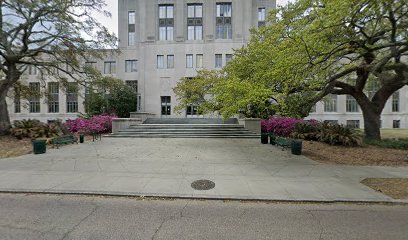
Atchafalaya National Heritage Area
Experience the Atchafalaya National Heritage Area: A unique blend of nature, culture, and history in the heart of Louisiana.

Essential bars & hidden hideouts
Atchafalaya Welcome Center
Explore the Atchafalaya Welcome Center, your essential starting point for discovering Louisiana's breathtaking landscapes and rich cultural heritage.

Atchafalaya National Wildlife Refuge
Explore the breathtaking biodiversity and serene landscapes of Atchafalaya National Wildlife Refuge in Louisiana, a must-visit for nature lovers.
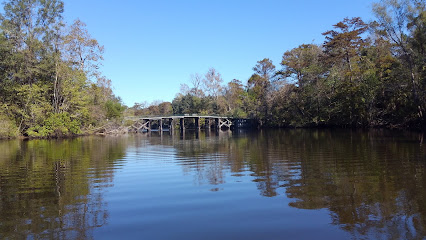
New Orleans Original Daiquiris Luling
Experience the vibrant flavors of Louisiana at New Orleans Original Daiquiris Luling, where every daiquiri is a celebration of taste and tradition.
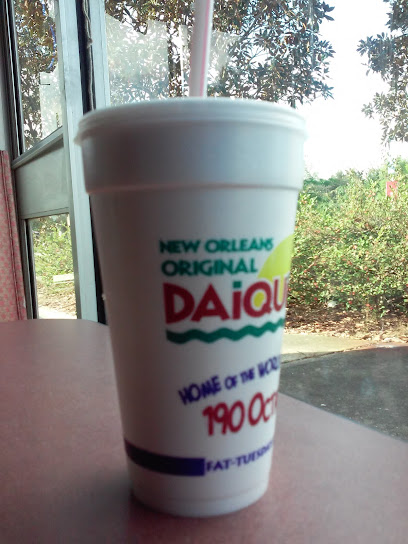
Atchafalaya National Heritage Area - Bayou Teche
Discover the Atchafalaya National Heritage Area - Bayou Teche, a wildlife refuge that showcases Louisiana's stunning natural beauty and rich cultural heritage.
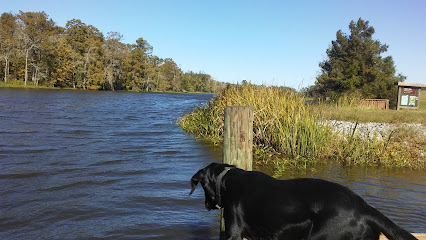
Atchafalaya National Heritage Area
Discover the cultural and natural treasures of the Atchafalaya National Heritage Area in Louisiana, a unique blend of history, nature, and local traditions.

Local Phrases about Atchafalaya National Heritage Area
-
- HelloBonjour
[bon-zhoor] - GoodbyeAu revoir
[oh-reh-vwah] - YesOui
[wee] - NoNon
[nohn] - Please/You're welcomeS'il vous plaît / De rien
[seel voo pleh / duh ryehn] - Thank youMerci
[mehr-see] - Excuse me/SorryExcusez-moi / Désolé
[ex-kew-zay mwah / dey-zoh-lay] - How are you?Comment ça va?
[koh-mohn sa vah?] - Fine. And you?Bien. Et toi?
[byen. ay twah?] - Do you speak English?Parlez-vous anglais?
[par-lay voo ahn-glay] - I don't understandJe ne comprends pas
[zhuh nuh kohm-prahn pah]
- HelloBonjour
-
- I'd like to see the menu, pleaseJe voudrais voir le menu, s'il vous plaît
[zhuh voo-dray vwar luh muh-nyuh, seel voo pleh] - I don't eat meatJe ne mange pas de viande
[zhuh nuh mahnj pah duh vee-ahnd] - Cheers!Santé!
[sahn-tay] - I would like to pay, pleaseJe voudrais payer, s'il vous plaît
[zhuh voo-dray pay-ay, seel voo pleh]
- I'd like to see the menu, pleaseJe voudrais voir le menu, s'il vous plaît
-
- Help!Au secours!
[oh suh-koor] - Go away!Allez-vous-en!
[ah-lay vooz ahn] - Call the Police!Appelez la police!
[ah-play lah poh-lees] - Call a doctor!Appelez un médecin!
[ah-play uh mayd-sahn] - I'm lostJe suis perdu
[zhuh swee pair-doo] - I'm illJe suis malade
[zhuh swee mah-lahd]
- Help!Au secours!
-
- I'd like to buy...Je voudrais acheter...
[zhuh voo-dray zah-shay...] - I'm just lookingJe regarde juste
[zhuh ruh-gahrd zhew-stuh] - How much is it?Combien ça coûte?
[kohm-byen sah koot] - That's too expensiveC'est trop cher
[say troh shay] - Can you lower the price?Pouvez-vous baisser le prix?
[poo-veh voo beh-say luh pree]
- I'd like to buy...Je voudrais acheter...
-
- What time is it?Quelle heure est-il?
[kell ur ay-teel] - It's one o'clockIl est une heure
[eel ay tewn ur] - Half past (10)Dix et demi
[dees ay d'mee] - MorningMatin
[mah-tan] - AfternoonAprès-midi
[ah-pray mee-dee] - EveningSoir
[swahr] - YesterdayHier
[yehr] - TodayAujourd'hui
[oh-zhoor-dwee] - TomorrowDemain
[duh-mahn] - 1Un
[uhn] - 2Deux
[duh] - 3Trois
[twah] - 4Quatre
[kat] - 5Cinq
[sank] - 6Six
[sees] - 7Sept
[set] - 8Huit
[wheat] - 9Neuf
[nurf] - 10Dix
[dees]
- What time is it?Quelle heure est-il?
-
- Where's a/the...?Où est...?
[oo ay] - What's the address?Quelle est l'adresse?
[kell ay lad-res] - Can you show me (on the map)?Pouvez-vous me montrer (sur la carte)?
[poo-veh voo muh mohn-tray (soor lah kart)] - When's the next (bus)?Quand est le prochain (bus)?
[kahn ay luh pro-shahn (bus)] - A ticket (to ....)Un billet (pour ....)
[uhn bee-yay (poor)]
- Where's a/the...?Où est...?
History of Atchafalaya National Heritage Area
-
The Atchafalaya National Heritage Area was originally inhabited by indigenous peoples, including the Chitimacha tribe. These early inhabitants utilized the abundant natural resources of the region, practicing fishing, hunting, and agriculture. The Chitimacha were known for their intricate basket-weaving techniques and their deep spiritual connection to the land and water.
-
In the 16th and 17th centuries, European explorers, including the French and Spanish, began to navigate the waters of the Atchafalaya Basin. The French established settlements in the region, and by the early 18th century, French Acadians (Cajuns) who were expelled from Canada settled in the area. They brought with them unique cultural practices, including their distinct cuisine, music, and language, which have greatly influenced the region's cultural landscape.
-
One of the most significant events in the history of the Atchafalaya National Heritage Area was the Great Flood of 1927. The Mississippi River flooded extensively, affecting the Atchafalaya Basin and surrounding areas. This catastrophic event led to the construction of the Mississippi River and Tributaries Project by the U.S. Army Corps of Engineers, which included levees, spillways, and other flood control structures to manage the waters of the Mississippi and Atchafalaya Rivers.
-
Throughout the 20th century, the Atchafalaya Basin underwent significant development, including the creation of the Atchafalaya Basin Floodway System. This system was designed to manage floodwaters and protect communities while preserving the unique ecosystem of the basin. Efforts were made to balance economic development, such as logging and oil exploration, with environmental conservation.
-
In 2006, the Atchafalaya National Heritage Area was designated by Congress to recognize and preserve the rich cultural, historical, and natural resources of the region. This designation highlights the importance of the area's unique blend of cultures, including Cajun, Creole, Native American, and African American influences. Efforts continue to promote sustainable tourism, cultural preservation, and environmental conservation within the heritage area.
Atchafalaya National Heritage Area Essentials
-
The Atchafalaya National Heritage Area is located in south-central Louisiana. The nearest major airport is Louis Armstrong New Orleans International Airport (MSY), which is approximately 90 miles east of the area. From the airport, you can rent a car or take a shuttle service to reach the heritage area. Another option is Baton Rouge Metropolitan Airport (BTR), located about 60 miles north. Interstate highways I-10 and I-49 provide convenient road access to the area.
-
To explore the Atchafalaya National Heritage Area, renting a car is highly recommended due to the expansive nature of the region. Public transportation options are limited. There are various guided tours available that offer boat, kayak, and airboat tours for an up-close experience of the swamps and waterways. Biking is also a popular mode of transportation within some of the smaller areas and towns.
-
The official currency is the United States Dollar (USD). Credit and debit cards are widely accepted in most hotels, restaurants, and shops. However, it's advisable to carry some cash, particularly when visiting rural areas or small local markets. ATMs are available in larger towns within the heritage area, but it's always a good idea to have enough cash on hand for emergencies.
-
The Atchafalaya National Heritage Area is generally safe for tourists. However, it is recommended to take standard precautions such as not leaving valuables in your car, staying aware of your surroundings, and avoiding isolated areas after dark. Some towns may have areas with higher crime rates, so it is advisable to research specific locations and ask locals for advice on safe areas to visit.
-
In case of an emergency, dial 911 for immediate assistance. It's important to note the locations of local hospitals and urgent care centers, such as Our Lady of the Lake Regional Medical Center in Baton Rouge. Carrying a basic first-aid kit and having travel insurance that covers medical emergencies is highly recommended. For minor health issues, there are pharmacies in the larger towns.
-
Fashion: Do dress comfortably and appropriately for the weather, as the area can be hot and humid. Don't wear heavy clothing that may cause discomfort during physical activities. Religion: Do respect local religious customs, especially when visiting churches or religious sites. Public Transport: Do be polite and respectful when using any available public transportation. Don't expect extensive public transport networks. Greetings: Do greet people with a friendly 'hello' or 'hi'. A handshake is common when meeting someone new. Eating & Drinking: Do try local Cajun and Creole cuisine. Don't refuse food offerings, as it is considered impolite. Always thank your hosts.
-
For an authentic experience, visit local festivals such as the Breaux Bridge Crawfish Festival and the Louisiana Shrimp & Petroleum Festival. Explore the Atchafalaya Basin by taking a swamp tour with a local guide to learn about the unique ecosystem. Engage with locals at farmers' markets to buy fresh produce and homemade goods. Don't miss the opportunity to fish, birdwatch, or simply enjoy the serene beauty of the wetlands.
Trending Landmarks in Atchafalaya National Heritage Area
-
Atchafalaya Basin Landing Airboat Swamp Tours
-
Atchafalaya National Wildlife Refuge
-
Plaquemine Lock State Historic Site
-
Bayou Teche National Wildlife Refuge - Garden City Unit
-
Atchafalaya Basin
-
Atchafalaya Delta Wildlife Management Area and Game Preserve
-
The Atchafalaya Experience
-
Atchafalaya Welcome Center
-
Atchafalaya National Heritage Area - Bayou Teche
-
Atchafalaya National Heritage
Nearby Cities to Atchafalaya National Heritage Area
-
Things To Do in Lafayette
-
Things To Do in Houma
-
Things To Do in Natchez
-
Things To Do in New Orleans
-
Things To Do in McComb
-
Things To Do in Lake Charles
-
Things To Do in Slidell
-
Things To Do in Gulfport
-
Things To Do in Port Arthur
-
Things To Do in Vicksburg
-
Things To Do in Hattiesburg
-
Things To Do in Beaumont
-
Things To Do in Monroe
-
Things To Do in Biloxi
-
Things To Do in Petaluma

